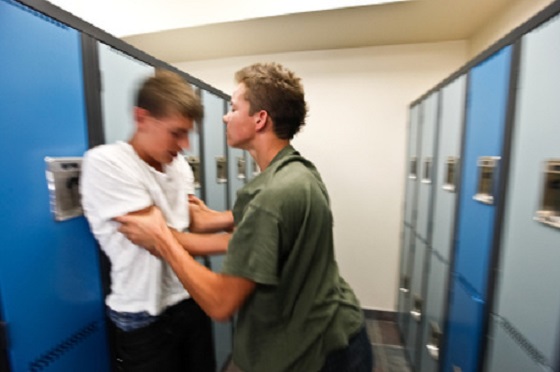Education
$13 million for RDP’s Centre for Innovation in Manufacturing-Technology Access Centre in Alberta Budget

Provincial funding to expand RDP’s Centre for Innovation in Manufacturing (CIM-TAC) will significantly boost applied learning and research opportunities
Expansion of Red Deer Polytechnic’s nationally recognized Technology Access Centre will provide more than 2,400 students direct and indirect innovative learning opportunities by 2030.
Red Deer Polytechnic (RDP) is celebrating a significant capital investment of $13 million by the provincial government to expand RDP’s Centre for Innovation in Manufacturing-Technology
Access Centre (CIM-TAC). The funding was announced today as part of the Government of Alberta’s 2024 budget.
“Red Deer Polytechnic is playing a critical role supporting technological innovation while creating opportunities for students. That’s why Alberta’s Government is making a strategic investment to expand the CIM-TAC and give RDP even greater capacity to train apprentices and help sectors across our economy remain competitive,” says the Hon. Rajan Sawhney, Minister of Advanced Education.
“We thank the Government of Alberta for the $13 million provided in Budget 2024 to expand our Centre for Innovation in Manufacturing–Technology Access Centre (CIM-TAC). This funding will help create new and innovative teaching and learning spaces at Red Deer Polytechnic, while expanding our applied research capacity to support Alberta based companies,” said Stuart Cullum, President of Red Deer Polytechnic.
“Because of this investment, Alberta based manufacturers across multiple sectors will have greater ability to develop, test and scale their ideas, while RDP students will be engaged at the forefront of made-in-Alberta technologies and manufacturing solutions. This expanded and enhanced innovation ecosystem will enhance productivity and social impact within our province,” said Cullum.
Students in a breadth of RDP’s programs and disciplines already benefit from education and skills-training opportunities within the CIM-TAC each year, through project work, internships, and workshops. The expanded CIM-TAC is anticipated to provide direct learning opportunities to 450 post-secondary students and indirect learning opportunities to an additional 2,000 students by 2030. These opportunities will afford RDP’s students direct interaction with community and industry partners to tackle real-world challenges in manufacturing and
advanced manufacturing. Additionally, over 500 junior and senior high school students will benefit from experiential learning within the CIM-TAC as part of dual-credit opportunities afforded through the Central Alberta Collegiate Institute (CACI).
RDP is Alberta’s third largest provider of skilled trades education. Learners enrolled in RDP’s apprenticeship and technology programs are among those who will benefit from the CIM-TAC expansion as this capital investment will support unique training opportunities.
“With the expansion of Red Deer Polytechnic’s CIM-TAC, our students will gain unparalleled access to advanced manufacturing technologies and immersive learning spaces. Students will have the hands-on experience and expertise needed to excel in the modern manufacturing sector. This expansion underscores our commitment to providing students with the tools and skills necessary to become industry-ready professionals, ensuring they emerge as highly sought-after innovators and contributors to Alberta’s economic prosperity,” says David Pye, Dean, RDP’s School of Trades and Technology.
The provincial Government’s $13 million investment in RDP’s CIM-TAC complements the recently announced historic $20 million gift to RDP from the Donald Family that will establish the Donald Family Institute for Healthtech Innovation. This parallel public and private funding support will be a game-changer for post-secondary training in central Alberta, in particular for healthcare providers and healthtech innovators.
“As RDP’s CIM-TAC grows capacity, it will undoubtedly provide new ways for students and faculty to engage in education and applied research with external health practitioners and researchers in this unique innovation ecosystem. Our students will have even more opportunities to gain valuable skills that prepare them for successful careers while also making meaningful contributions to Alberta’s healthcare sector,” says Heather Dirks, Interim Dean, RDP’s School of Health and Wellness.
Red Deer Polytechnic’s expansion plans for the CIM-TAC are in alignment with the Government of Alberta’s economic and social priorities, including the Ministry of Advanced Education’s 2030: Skills for Jobs Strategy.
This strategy outlines a need to increase student access, build capacity for skills training in technology and trades, and support research and commercialization through the post-secondary sector.
“As one of Canada’s Top 50 Research Polytechnics and Colleges, we already make a significant positive impact across our province and country,” says Dr. Tonya Wolfe, Associate Vice President, Applied Research.
“The future is very bright as we plan for the expansion of our Centre for Innovation in Manufacturing-Technology Access Centre. This means we can create even more impact in productivity in the manufacturing sector through collaboration between students, faculty and industry that help people solve challenges in their daily lives.”
The overall cost of the capital expansion of the CIM-TAC is projected to be approximately $21.3 million. This includes the $13 million provided by the Government of Alberta in Budget 2024, with $4.8 million in capital and equipment provided through Government of Canada grants, and $3.5 million from Red Deer Polytechnic’s own reserves. Construction on Red Deer Polytechnic’s CIM-TAC expansion is anticipated to begin in the fall of 2024.
Quick Facts:
• Red Deer Polytechnic’s expanded CIM-TAC will support a variety of sectors through advanced
manufacturing capabilities including energy innovation, transportation, aviation and agriculture. The Centre will also support RDP’s future expansion into more medical device manufacturing and healthcare innovations to support both patients and providers.
• RDP’s expansion of the CIM-TAC will grow the facility’s footprint from 15,000 square feet to
25,000 square feet.
• The CIM-TAC currently houses $7.6 million of advanced manufacturing equipment. As the facility expands, so too will RDP’s capacity to house additional technologies and equipment used for product development, advanced manufacturing and medical device manufacturing.
• In 2022, Red Deer Polytechnic attracted more than $2 million in applied research investment. RDP also completed 64 projects for 57 companies and participated in more than 1,300 engagements with industry partners.
• Since the CIM-TAC’s inception in 2009, Red Deer Polytechnic has supported more than 300 industry partners (including repeat clients).
Alberta
Alberta poll shows strong resistance to pornographic material in school libraries

From LifeSiteNews
A government survey revealed strong public support, particularly among parents, for restricting or banning sexually explicit books.
Albertans are largely opposed to their children viewing pornography in school libraries, according to government polling.
In a June 20 press release, the Government of Alberta announced that their public engagement survey, launched after the discovery of sexually explicit books in school libraries, found that Albertans strongly support removing or limiting such content.
“Parents, educators and Albertans in general want action to ensure children don’t have access to age-inappropriate materials in school libraries,” Demetrios Nicolaides, Minister of Education and Childcare, said.
“We will use this valuable input to guide the creation of a province-wide standard to ensure the policy reflects the priorities and values of Albertans,” he continued.
READ: Support for traditional family values surges in Alberta
The survey, conducted between May 28 to June 6, received nearly 80,000 responses, revealing a widespread interest in the issue.
While 61 percent of respondents said that they had never previously been concerned about children viewing sexually explicit content in libraries, most were opposed to young children viewing it. 34 percent said children should never be able to access sexually explicit content in school libraries, while 23 percent believed it should be restricted to those aged 15 and up.
Similarly, 44 percent of parents of school-aged children were supportive of government regulations to control content in school libraries. Additionally, 62 percent of respondents either agreed or strongly agreed that “parents and guardians should play a role in reporting or challenging the availability of materials with sexually explicit content in school libraries.”
READ: Alberta Conservatives seeking to ban sexually graphic books from school libraries
The polling results come after the Conservative Alberta government under Premier Danielle Smith announced that they are going ahead with plans to eventually ban books with sexually explicit as well as pornographic material, many of which contain LGBT and even pedophilic content, from all school libraries, on May 27.
At the time, Nicolaides revealed that it was “extremely concerning” to discover that sexually explicit books were available in school libraries.
The books in question, found at multiple school locations, are Gender Queer, a graphic novel by Maia Kobabe; Flamer, a graphic novel by Mike Curato; Blankets, a graphic novel by Craig Thompson; and Fun Home, a graphic novel by Alison Bechdel.
David Clinton
Why Are Ontario’s Public Schools So Violent?


 David Clinton
David Clinton
Ontario’s Auditor General just released a performance audit on the Toronto District School Board. I’m sure it’ll surprise exactly no one that “financial and capital resources are not consistently allocated in the most cost-effective or efficient way” or that “The effective management of operations was not always being measured and assessed for internal decision-making”.
And there was plenty of institutional chaos:
“Between 2017/18 and 2022/23…about 38% of TDSB schools did not report conducting the minimum number of fire drills required by the Ontario Fire Code annually, and about 31% of TDSB schools did not report conducting the minimum number of lockdown drills required by TDSB policy annually. The TDSB does not have an effective process to ensure the required number of drills are performed by each school, each year, or that they are performed in accordance with TDSB policy when performed.”
What else would you expect from a massive government bureaucracy that employs 40,000 people, spends $3.6 billion annually and – based on many of the highlighted items on their website – is laser-focused on pretty much anything besides education?
What you might not have seen coming was that around half of the report centered on in-school violence. To be sure, we’re told that there were only 407 violent events reported to the board during the 2022/2023 school year – which is a rate of around 17 events for every 10,000 students. 17:10,000 doesn’t exactly sound like an environment that’s spiraling out of control.
There was a caveat:
“Due to input errors by principals, the TDSB underreported the number of violent incidents that occurred between 2017/18 to 2021/22 to the Ministry by about 9%.”
Ok. But we’re still nowhere near Mad Max levels of violence. So what’s attracting so much of the auditor’s attention? Perhaps it’s got something to do with a couple of recent surveys whose results don’t quite match the board’s own records. Here’s how the audit describes the first of those:
“The 2022/23 TDSB Student and Parent Census was responded to by over 138,000 students, parents, guardians and caregivers. It showed that 23% of students in Grades 4 to 12 that responded to the survey said they were physically bullied (e.g., grabbed, shoved, punched, kicked, tripped, spat at), and about 71% stated they were verbally bullied (e.g., sworn at, threatened, insulted, teased, put down, called names, made fun of). Further, about 14% of student respondents indicated they had been cyberbullied. TDSB’s central tracking of all bullying incidents is much lower than this, suggesting that they are not centrally capturing a large number of bullying incidents that are occurring.”
“23% of students in Grades 4 to 12 that responded to the survey said they were physically bullied”. That’s not a great fit with that 17:10,000 ratio, even if you add the 9 percent of underreported incidents. And bear in mind that these students and their families were willing to discuss their experiences in a survey run by the school board itself, so it’s not like they’re hard to find.
But that’s not the worst of it. The Elementary Teachers’ Federation of Ontario (ETFO) ran their own survey in 2023. They wanted to hear about their members’ experiences with workplace violence. Here, quoting from the audit report, is what TDSB respondents told them:
- 42% had experienced physical force against themselves in 2022/23;
- 18% had experienced more than 10 of these physical force incidents in 2022/23;
- 81% indicated the number of violent incidents increased since they started working;
- about 77% responded that violence was a growing problem at their school;
- about 29% indicated they had suffered a physical injury;
- 57% had suffered a psychological injury/illness (such as mental stress, psychological or emotional harm) as a result of workplace violence against them; and
- about 85% indicated that violence at their school made teaching and working with students more difficult.
29 percent of teachers suffered a physical injury due to workplace violence. That’s elementary school teachers we’re talking about.
For perspective, even accounting for the 9 percent underreporting, the TDSB was aware of events impacting less than a quarter of a percentage point of their students (and apparently didn’t report any violence against teachers). But by their own accounts, 23 percent of all students and 42 percent of elementary teachers have suffered attacks. Are board officials willfully ignoring this stuff?
And if only there was some way to address violence and other criminal activities on school property. Perhaps – and I’m just spitballing here – there could even be people working in schools whose job it would be to (what’s the word I’m looking for?) police crime.
On a completely unrelated note, back in November, 2017, the Toronto District School Board voted 18-3 to permanently end their School Resource Officer (SRO) program. Since then, police officers have been unwelcome on board property.
To be sure, the TDSB has “accepted” all 18 of the report’s recommendations. But talk is cheap. Who’s to say that commitment won’t play out the same way we’ve seen with their fire drill compliance.
Can you spell “class action lawsuit”?
-

 Business2 days ago
Business2 days agoLatest shakedown attempt by Canada Post underscores need for privatization
-

 Business2 days ago
Business2 days agoWhy it’s time to repeal the oil tanker ban on B.C.’s north coast
-

 Aristotle Foundation2 days ago
Aristotle Foundation2 days agoHow Vimy Ridge Shaped Canada
-

 Alberta1 day ago
Alberta1 day agoPierre Poilievre – Per Capita, Hardisty, Alberta Is the Most Important Little Town In Canada
-

 MxM News1 day ago
MxM News1 day agoUPenn strips Lia Thomas of women’s swimming titles after Title IX investigation
-

 Alberta1 day ago
Alberta1 day agoAlberta Provincial Police – New chief of Independent Agency Police Service
-

 Energy2 days ago
Energy2 days agoIf Canada Wants to be the World’s Energy Partner, We Need to Act Like It
-

 International2 days ago
International2 days agoCBS settles with Trump over doctored 60 Minutes Harris interview






